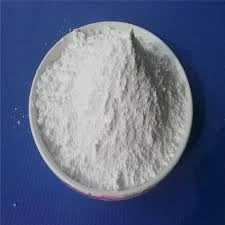Chemical Treatment of Water An Essential Process for Clean Water Supply
Water is essential for life, and ensuring its cleanliness is crucial for public health and environmental sustainability. Chemical treatment of water is a critical component of modern water purification processes, aimed at removing contaminants and making water safe for consumption and use. This article explores the processes, benefits, and challenges associated with chemical treatment of water.
Understanding Chemical Water Treatment
Chemical water treatment involves the application of various chemicals to water to remove impurities, including bacteria, viruses, heavy metals, and organic matter. The primary purpose of this process is to enhance the water's quality, making it safe for drinking, irrigation, and industrial use. The treatment process typically includes several stages, including coagulation, flocculation, sedimentation, filtration, and disinfection.
1. Coagulation and Flocculation The first step in chemical treatment involves adding coagulants, such as aluminum sulfate or iron salts, to the water. These chemicals bind with suspended particles, forming larger aggregates known as flocs. Flocculation is the process that follows, where gentle mixing encourages the formation of these larger particles, which can then be more easily removed from the water.
2. Sedimentation After flocculation, the water flows into sedimentation tanks where the heavier flocs settle to the bottom, forming a sludge layer. This process effectively reduces the concentration of suspended solids in the water.
3. Filtration The sedimented water is then subjected to filtration, where it passes through various filter media such as sand, gravel, or activated carbon. This step helps to remove any remaining particulate matter and improves the water's clarity.
4. Disinfection The final stage is disinfection, where chemicals such as chlorine, chloramine, or ozone are introduced to eliminate pathogens, bacteria, and viruses. This is a crucial step to ensure that the treated water is microbiologically safe for human consumption.
Benefits of Chemical Treatment
chemical treatment of water

The chemical treatment of water offers several advantages. Firstly, it significantly improves water quality by removing harmful pathogens and pollutants, thus reducing the risk of waterborne diseases. This is particularly important in densely populated urban areas where contamination risks are higher.
Secondly, chemical treatment can be tailored to address specific contaminants based on the water source. For instance, if a water source has high levels of iron or manganese, appropriate chemicals can be added to effectively remove these metals.
Moreover, chemical treatment is a relatively quick process compared to other purification methods, allowing for large volumes of water to be treated efficiently. This makes it essential for urban water supply systems, where the demand for clean water is consistently high.
Challenges in Chemical Treatment
Despite its benefits, chemical treatment of water is not without challenges. One of the primary concerns is the potential formation of harmful by-products during disinfection. For instance, chlorination can lead to the formation of trihalomethanes (THMs), which are associated with various health risks. Therefore, continuous monitoring and regulation of chemical usage are necessary to minimize these risks.
Additionally, the reliance on chemicals raises issues related to environmental sustainability. The disposal of sludge and other chemical by-products necessitates careful management to prevent pollution of surrounding ecosystems.
Lastly, the economic costs of chemical treatment can be substantial, particularly for developing regions where infrastructure may be lacking. Investing in alternative water treatment technologies, such as membrane filtration or advanced oxidation processes, may be necessary for sustainable water management.
Conclusion
Chemical treatment of water plays a vital role in ensuring access to clean and safe drinking water across the globe. While it offers numerous benefits, awareness of the challenges involved is essential for effective water management. As the global demand for water continues to rise, it is imperative that we explore and invest in innovative treatment methods that prioritize both public health and environmental sustainability.

